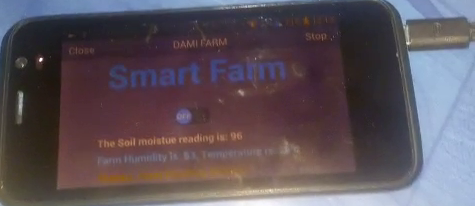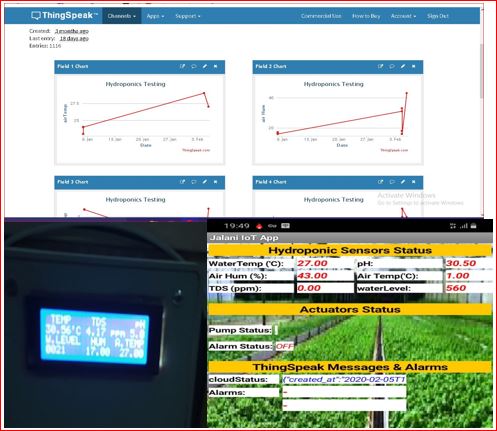Introduction
maintenance for 3D printing using IoT sensors creates a scenario such as if your 3D printer could tell you when it’s about to fail before it actually does. Sounds futuristic? Not anymore! With the rise of the Internet of Things (IoT), predictive maintenance has revolutionized how we maintain 3D printing machines. Instead of waiting for a breakdown, IoT sensors help prevent costly downtime by predicting failures before they happen. But how does it all work? Let’s dive into the details.
Understanding Predictive Maintenance
What is Predictive Maintenance?
Predictive maintenance is a proactive approach that uses real-time data, machine learning, and IoT sensors to detect potential issues before they lead to failure. Unlike reactive maintenance (fixing something after it breaks) or preventive maintenance (scheduled servicing regardless of machine condition), predictive maintenance ensures timely intervention based on actual machine health.

Why is Predictive Maintenance Important?
3D printing is widely used in industries like aerospace, healthcare, and manufacturing. Downtime in these sectors can be costly, delaying production and increasing operational expenses. Predictive maintenance minimizes these disruptions, ensuring that machines operate efficiently and continuously.
The Role of IoT in Predictive Maintenance
How IoT Sensors Work
IoT sensors collect and transmit real-time data on key machine parameters such as temperature, vibration, and humidity. This data is then analyzed using AI and machine learning to detect anomalies and predict potential failures.
Types of IoT Sensors Used in 3D Printers
- Temperature Sensors – Monitor overheating or cooling inefficiencies.
- Vibration Sensors – Detect unusual vibrations indicating mechanical issues.
- Humidity Sensors – Ensure environmental conditions are optimal for printing materials.
- Current Sensors – Monitor power consumption to detect electrical faults.
- Acoustic Sensors – Capture sound variations that may indicate component wear.
The Byzantine Empire’s Art and Architecture: A Legacy of Splendor
How Predictive Maintenance Works in 3D Printing
Data Collection & Analysis
IoT sensors continuously collect data from the 3D printer’s components. This data is then processed through cloud-based analytics platforms, where machine learning algorithms analyze patterns and identify deviations.
Identifying Anomalies
AI models compare real-time data with historical performance records. If irregularities such as excessive vibration or temperature spikes are detected, the system alerts operators before a failure occurs.
Scheduled Maintenance vs. Real-Time Alerts
Traditional scheduled maintenance can be inefficient, leading to unnecessary part replacements or missed failure predictions. Predictive maintenance optimizes servicing schedules based on actual machine conditions, reducing costs and improving efficiency.
Benefits of Predictive Maintenance for 3D Printing
1. Reduced Downtime
Predictive maintenance helps prevent unexpected breakdowns, keeping production on track and reducing costly interruptions.
2. Extended Machine Lifespan
By addressing potential issues before they escalate, predictive maintenance prolongs the lifespan of 3D printers.
3. Lower Maintenance Costs
Avoiding emergency repairs and unnecessary part replacements leads to significant cost savings.
4. Improved Print Quality
Malfunctioning components can cause print defects. By maintaining optimal conditions, predictive maintenance enhances print accuracy and consistency.
5. Enhanced Operational Efficiency
Optimized maintenance schedules and real-time alerts lead to smoother operations and better resource allocation.
Challenges of Implementing Predictive Maintenance
1. Initial Investment Costs
IoT sensors and predictive analytics software require upfront investment, which may be a barrier for smaller businesses.
2. Data Management & Security
Handling large volumes of sensor data requires robust cybersecurity measures to prevent unauthorized access.
3. Integration with Existing Systems
Many businesses use legacy 3D printers that may not be compatible with modern IoT solutions, requiring additional upgrades.
4. Skilled Workforce
Operators need to understand predictive analytics and IoT technologies to leverage predictive maintenance effectively.
Future of Predictive Maintenance in 3D Printing
AI-Powered Predictive Analytics
With advancements in AI and machine learning, predictive models will become even more accurate in detecting potential failures.
Edge Computing for Faster Processing
Edge computing will enable real-time analysis of IoT sensor data, reducing latency and improving response times.
Integration with Blockchain
Blockchain can enhance data security and transparency by providing tamper-proof maintenance logs and machine histories.
Self-Healing 3D Printers
Future 3D printers could use predictive maintenance to not only detect issues but also self-correct minor defects without human intervention.
How Businesses Can Implement Predictive Maintenance
1. Assess Machine Readiness
Evaluate whether existing 3D printers support IoT integration or require upgrades.
2. Choose the Right IoT Sensors
Select appropriate sensors based on machine specifications and operational requirements.
3. Implement Cloud-Based Analytics
Use cloud computing to process and analyze sensor data for actionable insights.
4. Train Staff
Ensure employees understand how to interpret predictive maintenance alerts and take appropriate action.
5. Monitor & Optimize
Continuously refine predictive models based on real-world performance data to enhance accuracy.
FAQs
1. What industries benefit the most from predictive maintenance in 3D printing?
Industries like aerospace, automotive, healthcare, and manufacturing benefit the most due to their reliance on precision and minimal downtime.
2. How accurate are predictive maintenance models for 3D printers?
Accuracy depends on the quality of IoT sensor data and machine learning algorithms. With continuous optimization, predictive models can achieve over 90% accuracy.
3. Can predictive maintenance be applied to all types of 3D printers?
While most industrial 3D printers support IoT integration, older or desktop models may require retrofitting or external monitoring solutions.
4. What is the cost of implementing predictive maintenance for 3D printing?
Costs vary based on the number of machines, sensor types, and analytics platforms used. However, the long-term savings on maintenance and downtime often outweigh the initial investment.
5. How does predictive maintenance differ from traditional maintenance strategies?
Traditional maintenance follows a fixed schedule or reacts to failures, whereas predictive maintenance uses real-time data to anticipate issues before they occur.
Conclusion
Predictive maintenance powered by IoT sensors is transforming the 3D printing industry by reducing downtime, cutting costs, and improving machine efficiency. While initial implementation may pose challenges, the long-term benefits far outweigh the drawbacks. As AI and IoT technologies continue to evolve, predictive maintenance will become an indispensable tool for businesses relying on 3D printing. Ready to future-proof your 3D printing operations? It’s time to embrace predictive maintenance!


